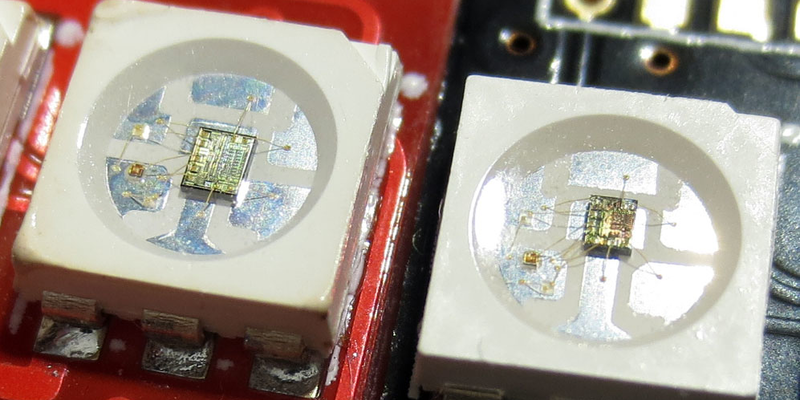Light Emitting Diodes (LEDs)
If you’re living in the 21st century, you probably know what Light Emitting Diodes (LEDs) are. They take a voltage, and emit light. They can be pretty bright for how small they are, but can also be power hungry at full brightness if used in large quantities/arrays.
ARGB (adressable red, green, blue) LEDs, e.g. WS2812(B) LEDs, will consume more power because they actually consist of three LEDs, one for red, green and blue. They also contain a controller on-board to interpret a data signal that requires further power.
WS2812 LEDs up close:

I won’t be covering how to add a per-key RGB LED switch matrix as it is out of the scope of this guide, but I may make a follow up tutorial in the future. Other resources exist online already if you want to learn how (or you can just ask people), but I wouldn’t recommend attempting it for a first PCB.
Note: Dumb/common anode LEDs require a matrix and dedicated RGB controller chip, whereas ARGB LEDs such as WS2812s have onboard controllers.
Continue:
PCBs